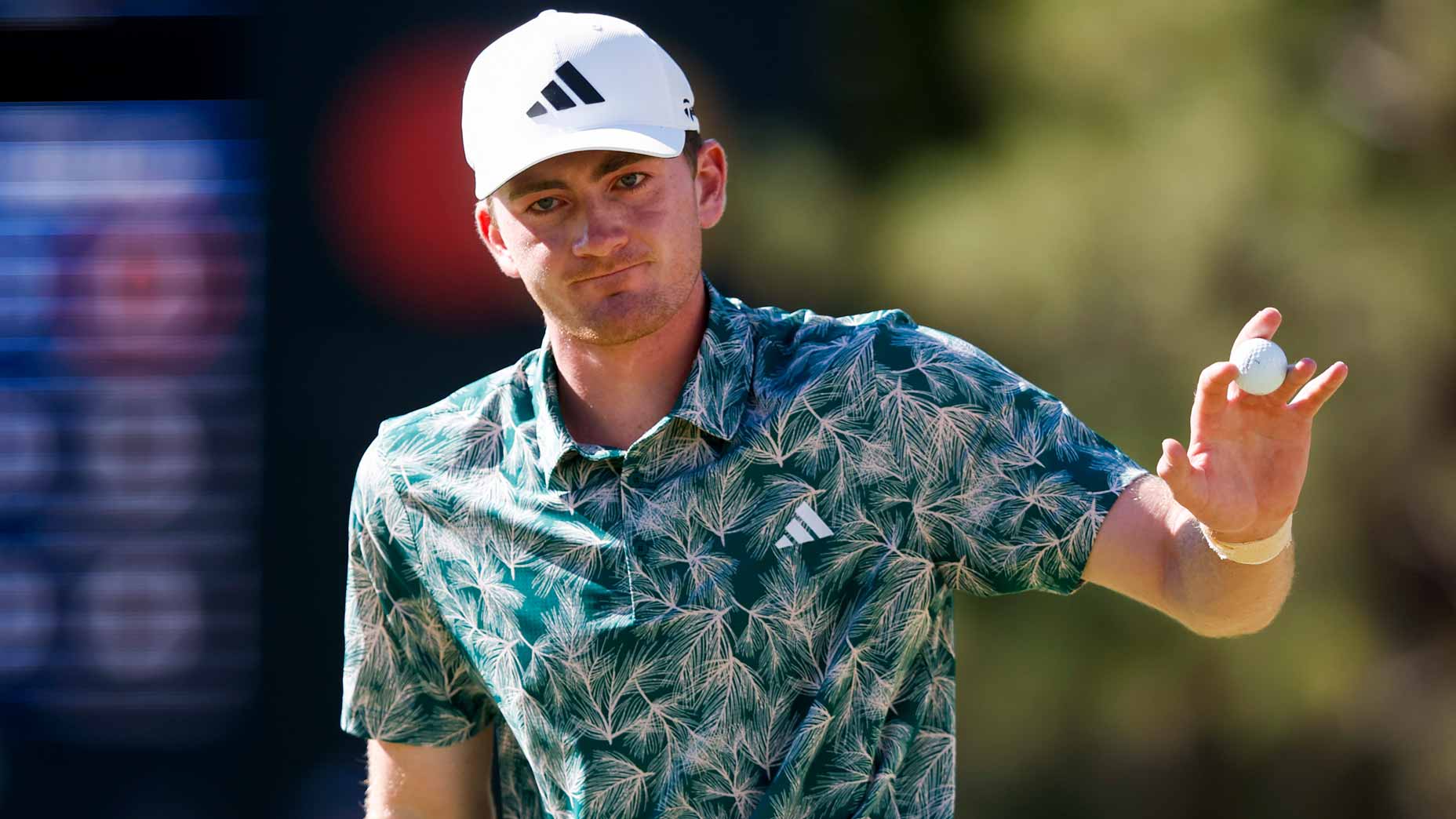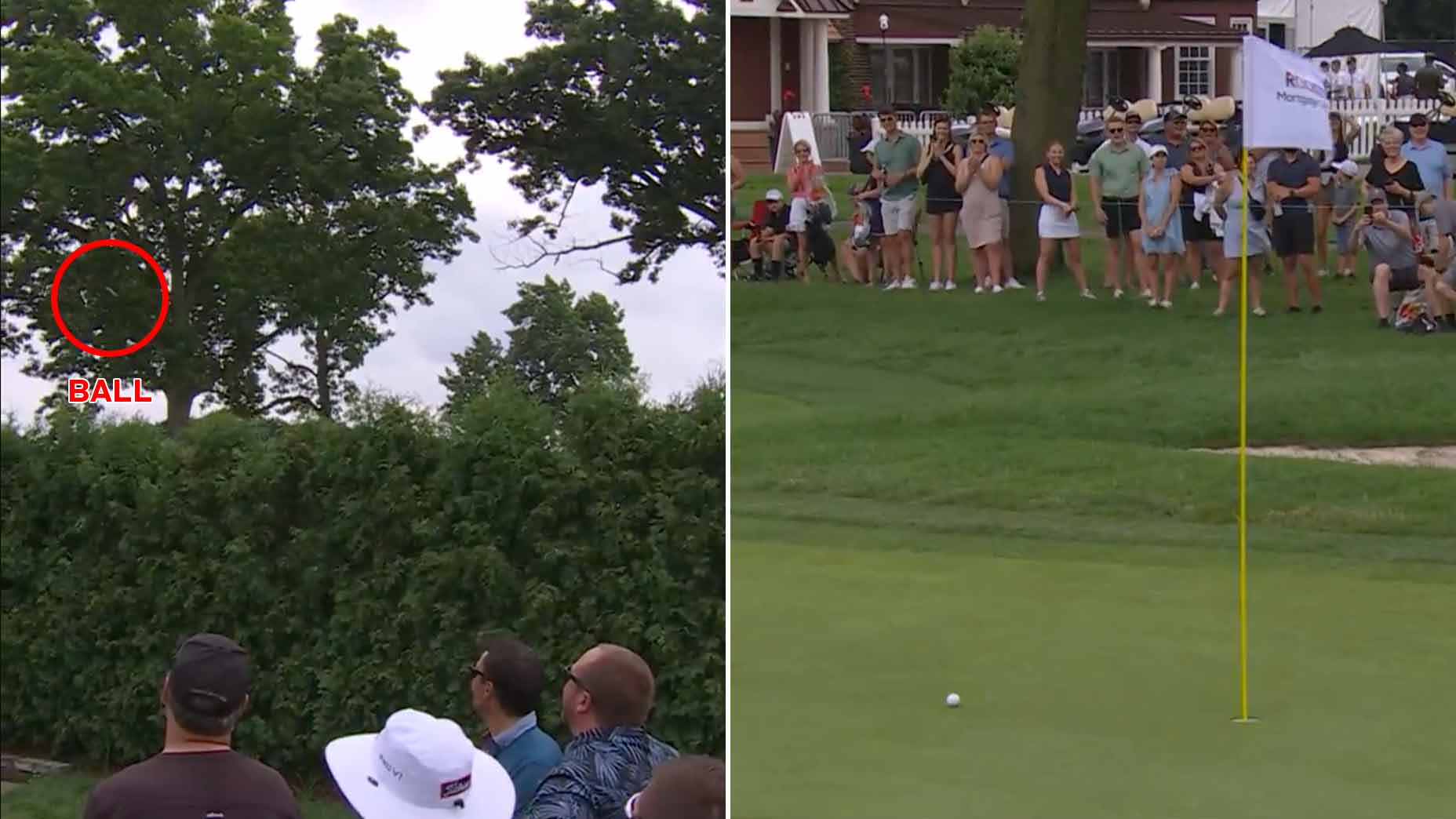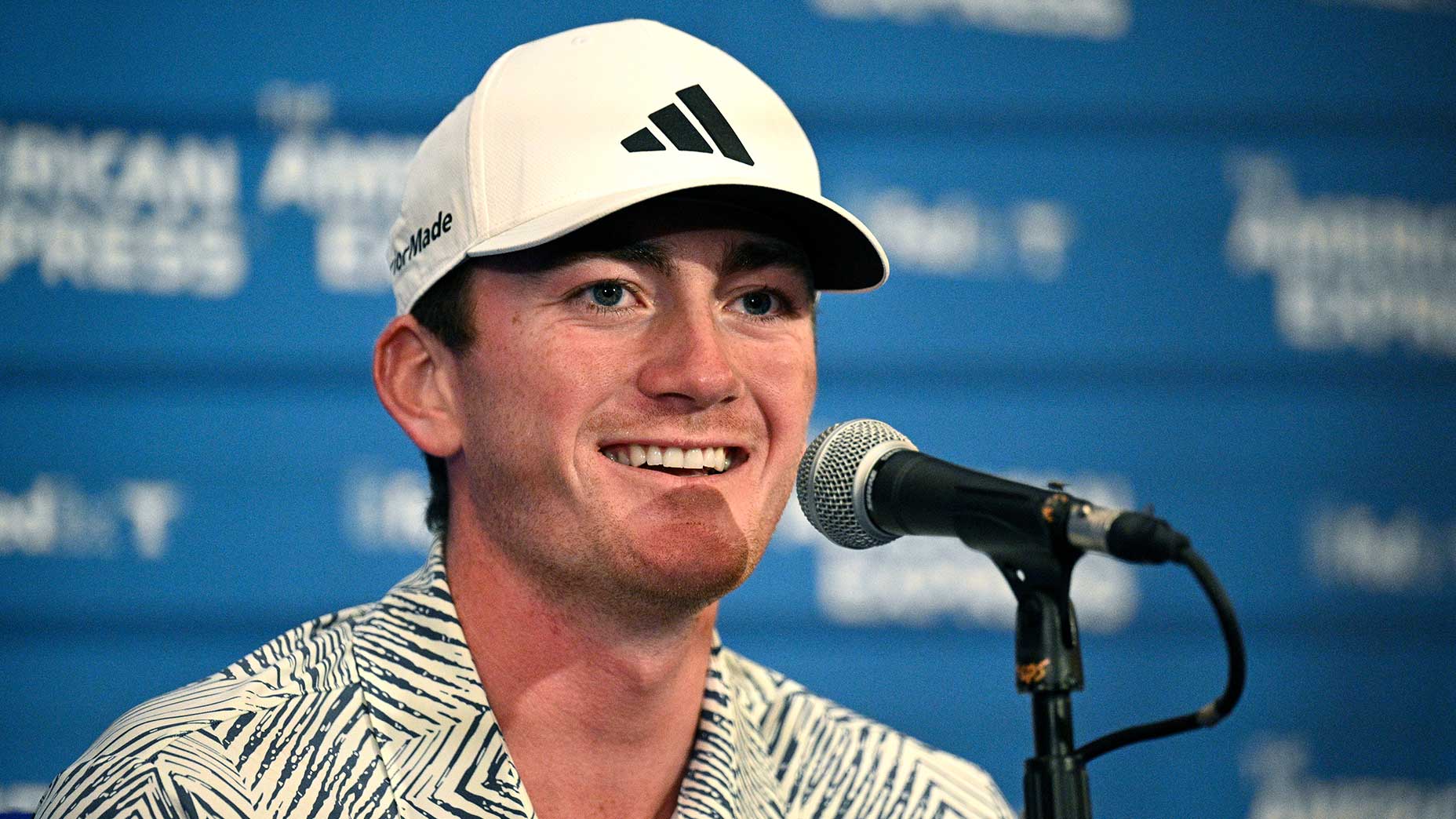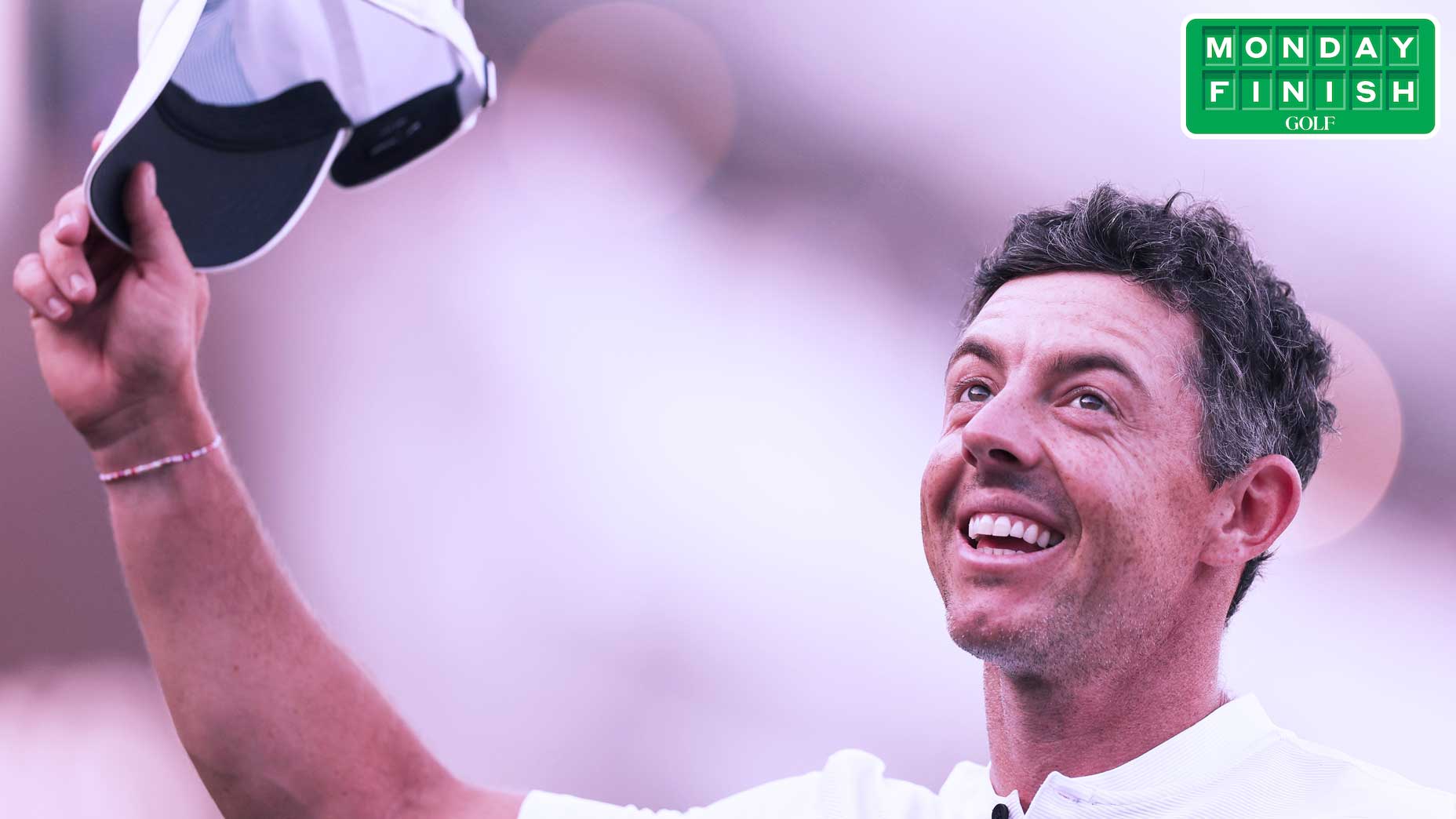The surprising reason Nick Dunlap’s historic victory nearly came undone

Nick Dunlap became the first amateur to win on the PGA Tour in 33 years on Sunday.
Sean Gaffey/Getty Images
The legendary filmmaker Alfred Hitchcock famously once asked us to “consider the bomb.”
Surprise, Hitchcock said, is what happens when the audience witnesses a bomb explode out of nowhere. But suspense is when the audience sees the bomb planted and knows it is going to explode.
“In the first case we have given the public fifteen seconds of surprise at the moment of the explosion. In the second we have provided them with fifteen minutes of suspense,” he’d said. “The conclusion is that whenever possible the public must be informed.”
Evidently, Hitchcock would have been a fan of the setting that played out on Sunday afternoon at the American Express, when the golf audience was treated to one of the most suspenseful finishes in recent PGA Tour memory.
It was the sort of scene that could only happen in golf. There stood 20-year-old Nick Dunlap on the 72nd hole of the American Express, his heart pounding. Up ahead lay the 18th green, and the chance for Dunlap to close out a stunning, historic victory — the first for an amateur on the PGA Tour since Phil Mickelson in 1991. But down at his feet lay his golf ball, which rested in precarious position at the foot of a mogul. Dunlap knew needed to hit something to keep himself in the tournament, but the question, as ever, was: what?
Those of us watching from the comfort of our living rooms were, invariably, screaming the answer in Dunlap’s direction. He needed to club-up, allowing his ball to travel the requisite 199 yards and carry the greenside bunker, thereby giving him the best chance of saving par. But as tends to be the case with yelling into the abyss, it was no use. Dunlap was the one clinging to an improbable lead at a PGA Tour event, and yet somehow, we knew more about the optimal strategy on his approach shot than he did.
The reason for our anxiety? Seconds before Dunlap struck his drive on the 18th to the bottom of the mogul, fans at home had watched Christiaan Bezuidenhout card an impossible birdie on the last, cutting Dunlap’s deficit to one. From Dunlap’s position a long distance away from the 18th green and out of eyeshot from a scoreboard, word of Bezuidenhout’s miraculous three had yet to reach his group. Dunlap was about to hit his tricky approach thinking he possessed a two-stroke lead, but in actuality, his lead was only one. A bogey would send him into a playoff.
As Golf Channel broadcaster Steve Burkowski and analyst Brandel Chamblee watched the 20-year-old think through his crucial 72nd hole, they seemed terrified to address the truth: Dunlap was about to hit the biggest shot of his entire life with less knowledge about the current competitive situation than any fan with a stable internet connection standing within 10 feet of him.
“He doesn’t know the score,” Chamblee said. “He can’t.”
Eventually, he settled on a club and smoked an iron well right, striking a fan and miraculously dribbling past the greenside bunker. The strategy, he said later, was simple: “just don’t hit it in the water.”
It wasn’t until after he cleared the fairway that word finally reached Dunlap himself: his lead was only one. Those of us watching at home let out audible yelps of relief when Dunlap’s approach came to rest in a collection area just off the back side of the green. He had managed to avoid the doomsday scenario dreaded by every golfer since the beginning of time: losing a game of leaderboard bingo.
Thankfully, Dunlap’s chip left him ample room to get up and down for the win — which was precisely what he did, draining a six-footer for par and a piece of golfing history. He had become the first golfer in 33 years to win as an amateur on the PGA Tour. He had become an overnight golf celebrity. His life had changed forever.
“Honestly, I felt the script today was already written,” he said later, mellowly. “I was going to go give it everything I had. Whether that’s I shoot 75 or 65 or 70, I just was going to give it everything I had.”
But when pressed about the moment on 18, he relented.
“I wasn’t [thinking I had a one-shot lead],” he said. “I thought I had a two-shot lead.”
For those of us at home, there was little left to do but laugh. Of course he hadn’t known. It was Dunlap’s act of not-knowing that had provided us 30 minutes of suspense to close out the tournament.
It was a horrifying way to close out a golf tournament, and also perhaps the most interesting of all outcomes.
Hitchcock would be proud.













